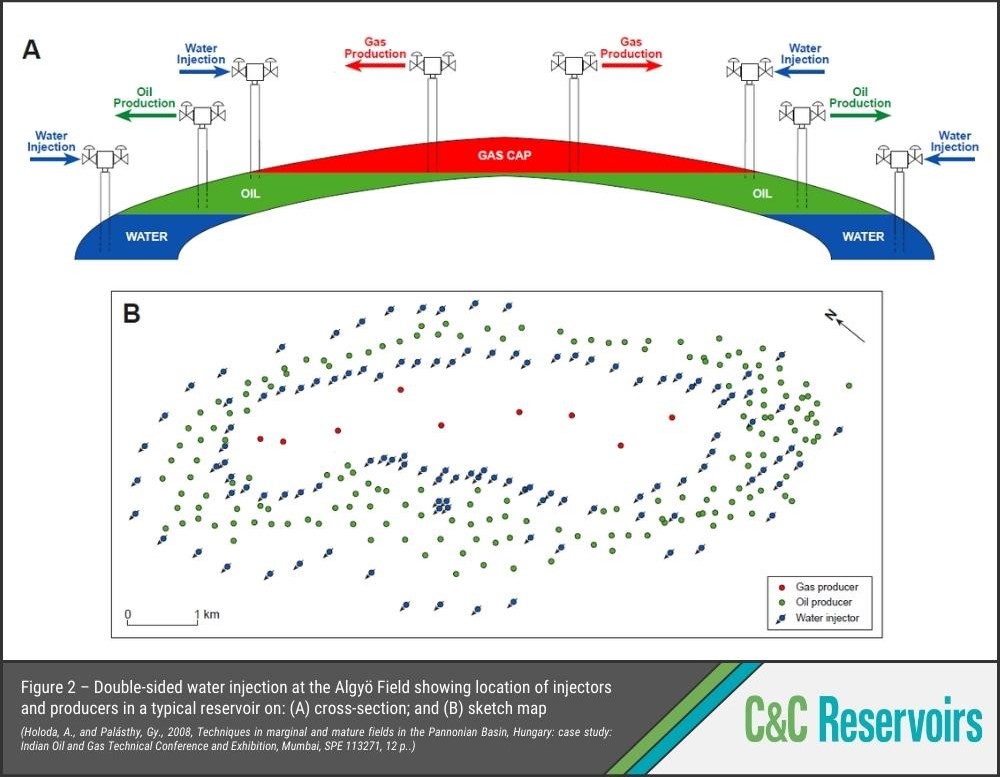The Algyö Field
Analogue Spotlight
This Analogue Spotlight is the Algyö Field in Hungary. This global oil and gas analogue provides an excellent case study on the efficacy of double-sided water injection.
The main trap in the Algyö Field is a compaction anticline containing stacked Pannonian sandstones draped over a Paleozoic basement high. There are 28 pay zones in the Upper Pannonian, comprising: gas (12); gas caps with thin oil rims (12); and undersaturated, volatile oil reservoirs (4) interbedded by mudstones. Production in the first year (1965) was ~674 BOPD. Oil was initially produced by solution-gas, gas-cap and moderate aquifer drives.
In 1969, double-sided water injection (simultaneously at the GOC and below the OWC) was initiated in the NW part of the Algyö-2 reservoir and extended to the seven largest gas-cap oil reservoirs during the next ten years. The two-sided water injection:
- Increased production from ~674 BOPD (1965) to ~24,480 BOPD (1976).
- Reduced gas-cap influx into the oil leg.
- Increased the efficiency of oil recovery/displacement in the reservoir.
The Digital Analogue Knowledge System (DAKS™) contains many global oil and gas analogues specifically focused on heavy oil fields. Use these analogues to benchmark your own field, and delve into C&C Reservoirs Reservoir Evaluation Reports to discover best practices from top performing reservoirs that can be applied to your own assets.


